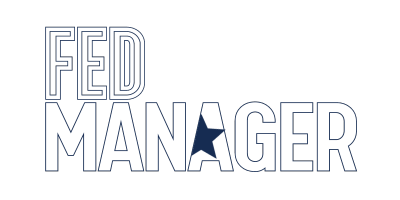Biden Administration Reports Progress in Achieving Workforce, Customer Service Goals
For the third quarter of fiscal year (FY) 2022, the Office of Management and Budget (OMB) reported solid progress toward advancing the customer experience imperatives, business management, and workforce priorities outlined in the President’s Management Agenda (PMA) issued by the Biden Administration late last year.
Workforce Priorities
The Biden Administration’s workforce priority area aims to make the federal government a model employer with a talented, diverse, and engaged workforce. With the participation of cross-functional representatives from a variety of agencies, OMB has built a cross-agency team to strengthen and empower the federal workforce. Team representatives include Office of Personnel Management (OPM) Director Kiran Ahuja, Deputy Defense Secretary Kathleen Hicks, and Labor Deputy Secretary Julie Su.
OMB’s four strategies in the workforce priority area include:
Recruit and hire the most qualified employees across the federal government, who reflect the diversity of our nation;
Engage, support and empower all employees with opportunities to learn, grow, and thrive throughout their careers;
Develop a federal employment roadmap with insights from the pandemic and national workforce trends; and,
Build and support a personnel system to achieve agency missions and sustain the federal government as a model employer.
Among the achieved milestones include issuing an agency hiring social toolkit following the Bipartisan Infrastructure Law, issuing preparation documents for the shift to continuous via the Federal Personnel Vetting Investigative Standards, and developing skills-based hiring guidance.
To address remaining goals, OPM appointed a Chief Transformation Officer, and launched two working groups to address human capital data and advance standards among human resources.
Business Management
As outlined by OMB, the federal government faces challenges in the areas of procurement, financial assistance, and financial management ecosystems which cost upwards of 1.5 trillion annually in contracting.
To resolve these inadequacies, OMB has suggested an enterprise approach to enhance the federal procurement system’s ability to adapt to government-wide objectives, such as advancing domestic manufacturing.
As part of this strategy, OMB outlined three goals:
Diversify and strengthen the federal marketplace;
Integrate and share acquisition data and tools; and
Engage and inspire the acquisition workforce to achieve goals.
To ensure a lasting change in the way business is conducted, OMB further recommended implementing capacity-building strategies, including analyzing the processes behind establishing financial assistance policies. For this purpose, OMB established two goals: (1) improve and formalize the governance of federal financial assistance across agencies to ensure effective and efficient implementation; (2) develop grants management competencies by identifying and strengthening the core competencies of grants managers.
According to OMB, the team overseeing the government business management portion of the PMA expects to publish success metrics and milestones with the next set of quarterly updates.
Customer Experience
Topping the list of FY2022 third quarter accomplishments for work on the PMA’s customer experience priority are: (1) evaluations of 35 agencies and components of the federal government identified as High Impact Service Providers (HISP); (2) implementation of human-centered design research around administration-designed “life experience” goals; (3) improvements to federal website functionality, including login.gov.
To further the progress, OMB highlighted upcoming strategies:
Enhance HISPs’ service design, digital projects, and customer experience management;
Develop and manage the delivery of government services across agencies for key life experiences; and,
Identify and prioritize development of shared services, standards, and products to enable streamline the federal customer experience.

